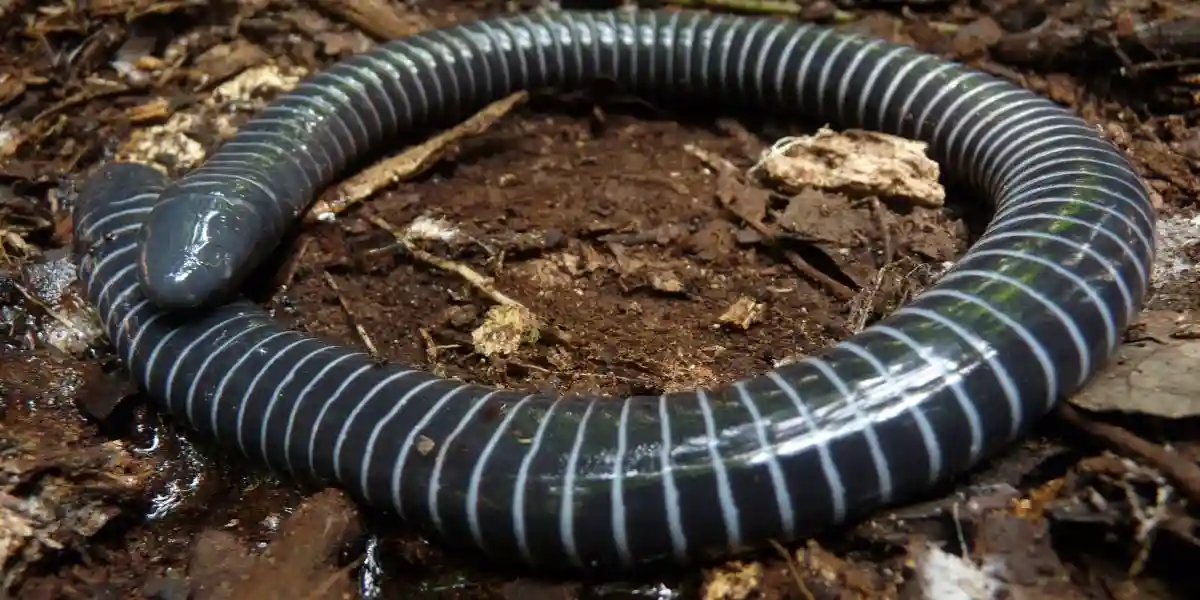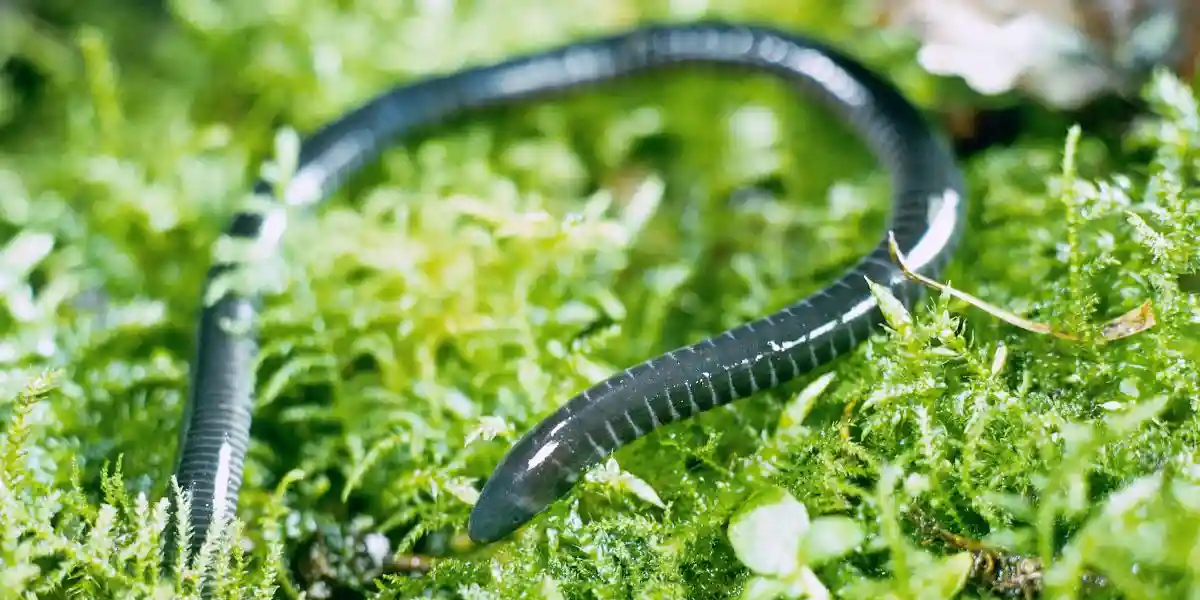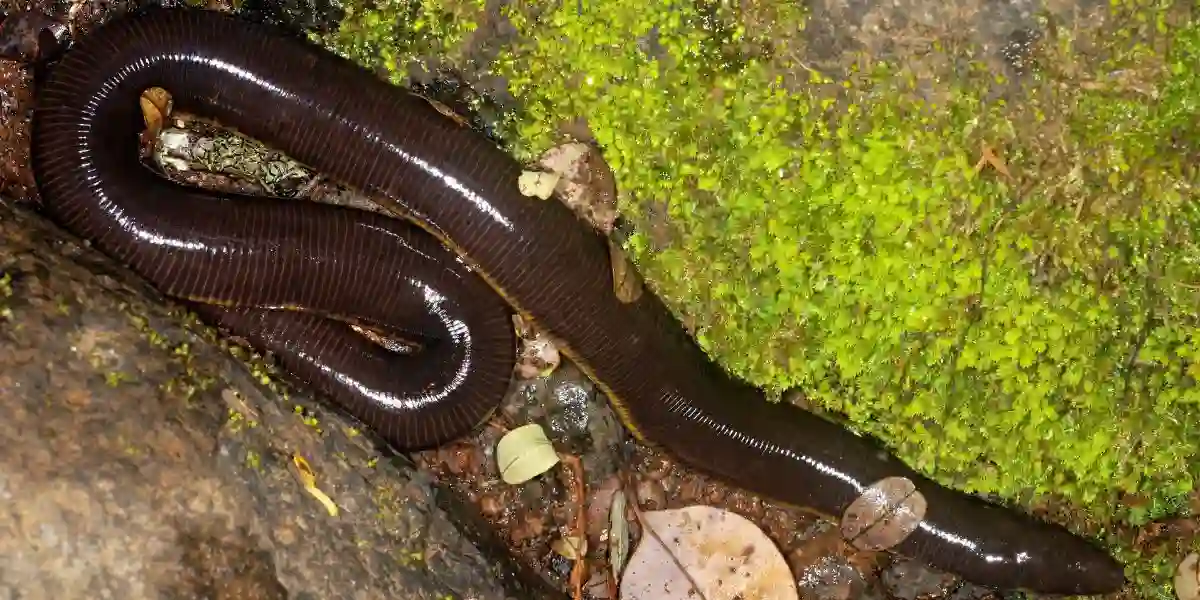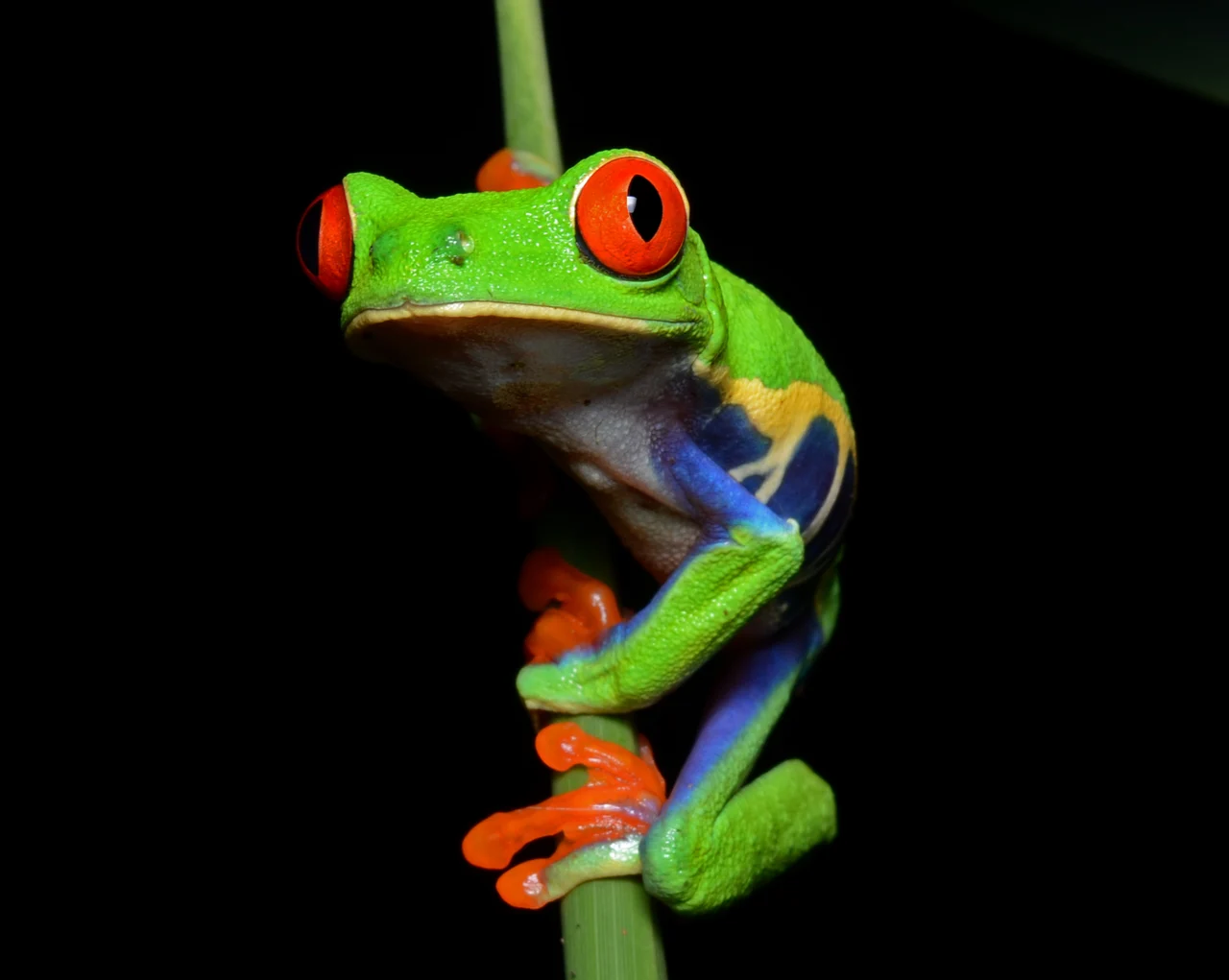What is a Caecilian?
A caecilian is a type of amphibian that belongs to the order Gymnophiona.
Unlike their more well-known amphibian relatives, such as frogs and salamanders, caecilians have a unique and fascinating set of characteristics that set them apart.

These legless creatures are often mistaken for snakes due to their elongated bodies, but they are actually more closely related to frogs and toads.
Importance of studying caecilians
Studying caecilians is crucial for understanding the diversity and evolution of amphibians as a whole.
These enigmatic creatures have been around for millions of years and have adapted to a specialized underground lifestyle.
By unraveling the mysteries of caecilians, scientists can gain valuable insights into the evolutionary processes that have shaped the animal kingdom.
Taxonomy and Classification of Caecilians
Kingdom, phylum, and class of caecilians
Caecilians belong to the animal kingdom, Animalia, and the phylum Chordata.
Within the phylum Chordata, they are classified under the class Amphibia, which includes all amphibians.
This class also encompasses frogs, toads, salamanders, and newts.
| Kingdom | Animalia |
|---|---|
| Phylum | Chordata |
| Subphylum | Vertebrata |
| Class | Amphibia |
| Order | Gymnophiona |
Suborders and families within the class
The class Amphibia is further divided into three suborders: Apoda, which includes caecilians, Caudata (salamanders and newts), and Anura (frogs and toads).
Caecilians are the only members of the suborder Apoda, which means “without feet” in Greek, reflecting their limbless nature.
Within the suborder Apoda, there are ten recognized families of caecilians: Ichthyophiidae, Rhinatrematidae, Siphonopidae, Dermophiidae, Herpelidae, Scolecomorphidae, Typhlonectidae, Caeciliidae, Chthonerpetonidae, and Indotyphlidae.
Each family contains multiple species, adding to the diversity of caecilians.
Evolutionary history and relationship to other amphibians
Caecilians have a long evolutionary history, with fossil evidence dating back over 200 million years.
They are believed to have diverged from other amphibians during the early Mesozoic era.
While they share a common ancestor with frogs and salamanders, caecilians have evolved unique adaptations that have allowed them to thrive in their underground habitats.
Genetic studies have revealed that caecilians are more closely related to frogs and toads than to salamanders.

This relationship is supported by similarities in their reproductive strategies and the presence of certain anatomical features.
However, caecilians have distinct characteristics that set them apart, such as their limblessness and specialized sensory organs.
Understanding the taxonomy and evolutionary history of caecilians provides a foundation for further exploration of their fascinating biology and behavior.
It allows scientists to unravel the intricate web of relationships within the amphibian class and sheds light on the diverse adaptations that have arisen throughout their evolutionary journey.
Physical Characteristics of Caecilians
Body structure and shape
Caecilians have a unique body structure that is perfectly suited for their underground lifestyle.
They have long, cylindrical bodies that can range in length from a few inches to over five feet, depending on the species.
Their bodies are divided into distinct segments, giving them a segmented appearance.
Unlike other amphibians, caecilians lack limbs. Instead, they have evolved a specialized body shape that allows them to move efficiently through the soil.
Their bodies are covered in small, sensory scales that help them navigate their environment and detect vibrations in the soil.
Skin texture and coloration
The skin of caecilians is smooth and moist, similar to that of other amphibians.
However, their skin is often more robust and thicker, providing protection against the abrasive soil they inhabit.
Some species have a slimy secretion on their skin, which aids in reducing friction as they burrow through the ground.

Caecilians exhibit a wide range of coloration, including shades of brown, gray, black, and even pink.
Their coloration often blends with the soil, allowing them to remain camouflaged in their underground habitats.
Some species have distinct patterns or markings on their bodies, which may serve as a form of communication or identification.
Sensory Organs and Adaptations for Underground Life
Caecilians have several unique adaptations that enable them to thrive in their subterranean habitats.
One of their most remarkable features is their specialized sensory tentacles, located on their heads.
These tentacles are used to detect chemical cues in the environment, helping them locate prey and navigate their surroundings.
Their eyes are often reduced or even absent in some species, as they rely more on their other senses.

However, some caecilians have small, light-sensitive eyes that can detect changes in light intensity.
They also possess a specialized jaw structure that allows them to capture and swallow their prey whole.
To aid in their burrowing abilities, caecilians have a specialized skull and a set of sharp, recurved teeth.
These adaptations enable them to dig through the soil with ease, creating tunnels and burrows where they can find shelter and hunt for food.
The physical characteristics of caecilians highlight their remarkable adaptations to an underground lifestyle.
Their unique body shape, sensory organs, and specialized teeth all contribute to their success in navigating and surviving in the subterranean world they call home.
Habitat and Distribution
Preferred habitats of caecilians
Caecilians are primarily found in tropical regions around the world, where they inhabit a variety of habitats.
They have a strong affinity for moist environments, such as rainforests, wetlands, and riverbanks.
Within these habitats, they can be found in a range of microhabitats, including leaf litter, soil, and even underground burrows.

Global distribution and diversity of species
Caecilians have a widespread distribution, with species found in Africa, Asia, Australia, and the Americas.
They are most diverse in the Neotropical region, which includes Central and South America.
The Amazon rainforest, in particular, is a hotspot for caecilian diversity.
Currently, over 200 species of caecilians have been identified, and new species are still being discovered.
Their diversity is not only reflected in their species richness but also in their ecological adaptations.
Caecilians have evolved to occupy a wide range of niches within their respective habitats, contributing to their overall success as a group.
| Region | Countries/Regions |
|---|---|
| Central and South America | Brazil, Ecuador, Colombia, Venezuela, and more |
| Africa | Congo Basin, West Africa, parts of East Africa, Nigeria, Cameroon, Democratic Republic of the Congo, Tanzania, and more |
| Southeast Asia | Malaysia, Indonesia, Thailand, Myanmar, the Philippines, and more |
| North America | Mexico (Yucatan Peninsula) |
| Europe | No native species. Accidental introductions reported in Italy and Spain. |
Factors influencing their distribution patterns
Several factors influence the distribution patterns of caecilians. One key factor is the availability of suitable underground habitats.
Caecilians require moist soil or leaf litter to burrow and move efficiently. Therefore, areas with dense vegetation and high humidity are more likely to support caecilian populations.
Climate also plays a role in their distribution. Caecilians are ectothermic, meaning their body temperature is regulated by their environment.

They are most active in warm and humid conditions, and their distribution is often limited by temperature extremes or arid environments.
Human activities, such as deforestation and habitat destruction, also impact the distribution of caecilians.
As their habitats are cleared for agriculture or urbanization, caecilian populations become fragmented and isolated, leading to a decline in their numbers.
Feeding Habits and Diet
Types of food consumed by caecilians
Caecilians are carnivorous amphibians, and their diet primarily consists of small invertebrates.
They have a diverse palate and feed on a variety of prey, including earthworms, termites, ants, beetles, and other small arthropods.
Some larger species of caecilians have been known to consume small vertebrates like frogs and lizards.
Feeding mechanisms and adaptations
Caecilians have unique adaptations that aid in capturing and consuming their prey.
Their specialized jaw structure allows them to open their mouths wide and swallow their prey whole.
They have rows of sharp, recurved teeth that help them grasp and immobilize their prey.
To locate their prey, caecilians rely heavily on their sensory tentacles.
These tentacles are highly sensitive to chemical cues, allowing them to detect the presence of potential prey items in the soil.
Once they locate their prey, they use their powerful muscles to lunge forward and capture it.
Role of caecilians in the ecosystem
Caecilians play an important role in their respective ecosystems as both predators and prey.
As predators, they help regulate populations of invertebrates, such as earthworms and insects.
By feeding on these organisms, they contribute to nutrient cycling and help maintain the balance of the ecosystem.
Caecilians serve as a food source for other animals. They are preyed upon by various predators, including snakes, birds, and mammals.
Their presence in the food web provides energy and sustenance for higher trophic levels.
Caecilians contribute to soil health and structure through their burrowing activities.
As they dig through the soil, they create tunnels and aerate the ground, which enhances nutrient availability and soil fertility.
Their burrows also provide shelter for other organisms, such as small invertebrates and microorganisms.
Threats and Conservation Status
Natural threats to caecilians
Caecilians face various natural threats in their habitats. Predation by snakes, birds, and mammals poses a significant risk to their survival.
Competition for resources with other amphibians and invertebrates can impact their ability to find food and suitable breeding sites.
Human-induced threats and habitat destruction
Human activities pose a significant threat to caecilians and their habitats. Deforestation, agriculture, and urbanization result in the destruction and fragmentation of their habitats.
The loss of forest cover and the conversion of land for agriculture disrupt the delicate balance of ecosystems, making it challenging for caecilians to find suitable habitats and resources.
Pollution, particularly from agricultural runoff and chemical contamination, also poses a threat to caecilians.
Water pollution can degrade the quality of their aquatic habitats and impact their ability to find food and reproduce.

Conservation efforts and initiatives
Conservation efforts are crucial for the protection and preservation of caecilians.
Several initiatives are underway to safeguard their habitats and raise awareness about their importance. These efforts include:
- Protected Areas: Establishing protected areas and national parks helps conserve the habitats of caecilians and other wildlife. These protected areas provide a safe haven for these amphibians to thrive and maintain their populations.
- Habitat Restoration: Restoring degraded habitats and reforesting areas can help create suitable environments for caecilians. This involves planting native vegetation, restoring water bodies, and implementing sustainable land management practices.
- Research and Monitoring: Conducting research on caecilians is essential for understanding their biology, ecology, and population dynamics. Monitoring their populations and studying their behavior helps assess their conservation status and identify potential threats.
- Education and Awareness: Raising awareness among local communities, policymakers, and the general public about the importance of caecilians and their habitats is crucial. Education programs, community engagement, and outreach initiatives can foster a sense of stewardship and encourage conservation efforts.
Efforts to conserve caecilians not only protect these unique amphibians but also contribute to the preservation of entire ecosystems.
By safeguarding their habitats and addressing the threats they face, we can ensure the long-term survival of caecilians and the biodiversity they represent.
Frequently Asked Questions
Caecilians are generally considered to be less common and less well-known compared to other amphibian groups such as frogs and salamanders. Their secretive and subterranean lifestyle makes them elusive and often challenging to study. However, in specific regions, such as Central and South America, caecilians can be diverse and abundant.
The lifespan of caecilians can vary depending on the species. In general, they are believed to have relatively long lifespans for amphibians, with some species living up to 10 to 15 years or more in the wild.
The world’s largest known caecilian is the South American species called the “Giant Caecilian” (Caecilia thompsoni). It can reach lengths of up to 1.5 meters (5 feet) and is considered the largest species within the Gymnophiona order.
No, a caecilian is not a snake. Caecilians are amphibians belonging to the order Gymnophiona, while snakes are reptiles belonging to the order Squamata. Although caecilians and snakes share some similarities in their elongated body shape, caecilians lack scales and have other anatomical features that distinguish them from snakes.
Some caecilians possess specialized glands in their skin that can produce toxic secretions. These secretions may contain substances that act as a defense mechanism against predators or as a means to immobilize prey. However, not all caecilians are known to be poisonous, and the toxicity level can vary among species.
While caecilians can produce toxic secretions, there is limited information on the toxicity and potential effects of these secretions on humans. It is generally advisable to exercise caution when handling any unfamiliar amphibians, as some may have skin secretions that can cause irritation or allergic reactions.
Many caecilian species have reduced or absent eyes, appearing to be blind. This is likely due to their primarily subterranean lifestyle, where visual senses are less important. Caecilians rely on other sensory adaptations, such as chemoreception and specialized sensory tentacles on their head, to navigate and locate prey in their dark underground habitats.
Yes, caecilians have brains. Like all vertebrates, including amphibians, they possess a central nervous system, which includes a brain and a spinal cord. However, caecilian brains may have specific adaptations to suit their unique sensory requirements and subterranean lifestyle.
Caecilians are not commonly kept as pets. Their specialized care requirements, including the need for a moist and controlled environment, make them challenging to maintain in captivity. Additionally, some caecilian species may have specific dietary needs that can be difficult to meet in a domestic setting. It is important to research and consult with experts before considering any amphibian as a pet to ensure their proper care and welfare.
Conclusion
Caecilians, with their fascinating physical characteristics, diverse habitats, and important ecological roles, are truly remarkable creatures.
Understanding their taxonomy, physical attributes, habitat preferences, feeding habits, and conservation status is vital for their conservation and the conservation of the ecosystems they inhabit.
As we continue to explore and study caecilians, it becomes increasingly clear that these enigmatic amphibians play a crucial role in maintaining the delicate balance of their ecosystems.
By protecting their habitats, raising awareness, and implementing conservation measures, we can ensure the survival of caecilians for future generations to appreciate and learn from.
Let us strive to preserve these extraordinary creatures and the wonders of the natural world they represent.




